
Portrait of Hijikata Toshizō (1835 – 1869). He was a Japanese warrior and Vice-Commander of the Shinsengumi. Photo by Tamoto Kenzō – Wikimedia Commons
Top 10 Interesting Facts About Hijikata Toshizo
Hijikata Toshizō was a Japanese warrior. As Vice-Commander of the Shinsengumi, he resisted the Meiji Restoration and fought to his end.
1. Hijikata was the youngest of ten children
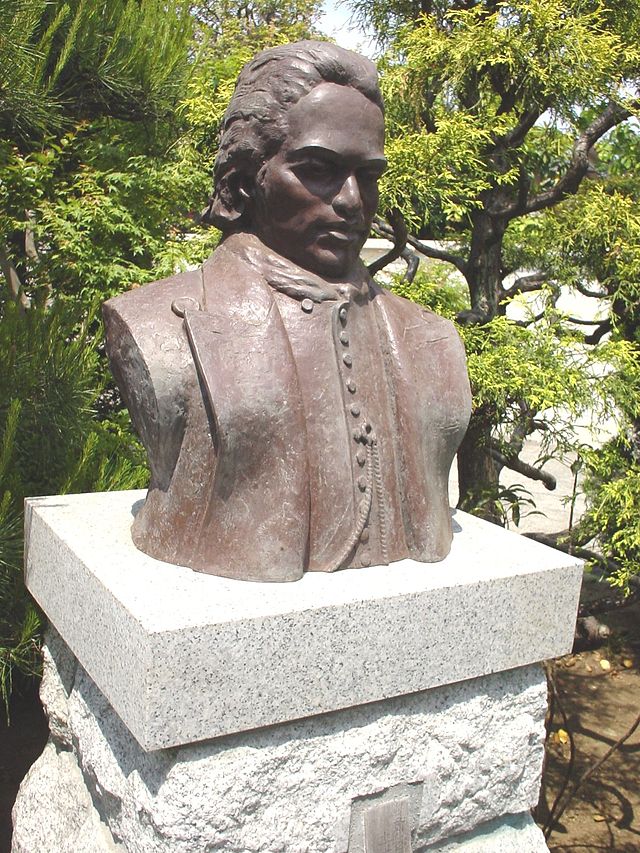
Hijikata Toshizo Kyozou. Photo by CasinoKat – Wikimedia Commons
Hijikata Toshizō Yoshitoyo was born on May 31, 1835, in the Ishida village, Tama region of Musashi Province (present-day Ishida, Hino, Tokyo), Japan. He was the youngest of ten children and his father Hijikata Yoshiatsu (Hayato), a well-to-do farmer, died a few months before his birth.
His eldest brother Tamejiro was born blind and as a result, could not inherit the family property.
His third older brother Daisaku (later Kasuya Ryojin), was adopted by another family and would later become a physician. His eldest sister Shuu died when he was about three years old and his mother Etsu also died when he was six years old, and he was therefore raised by his second older brother Kiroku and sister-in-law.
2. He was tall compared to the average Japanese men of the period
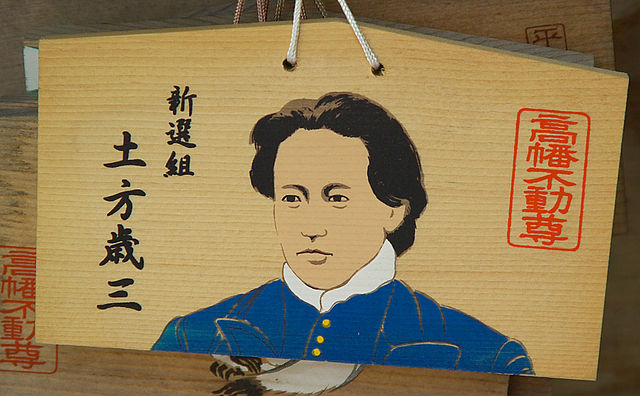
EmaHijikataToshizo. Photo unattributed – Wikimedia Commons
He was tall compared to the average Japanese man of the period, and it is said that he was very handsome. He was said to be spoiled at an early age and was alleged to be mean to all but his friends and family.
This changed when a 21-year-old swordsman from the Aizu clan known for opposing the Reformists was forced to commit seppuku. When Hijikata attended the man’s funeral, he cried in public.
3. He spent his youth selling his family’s Ishida san’yaku
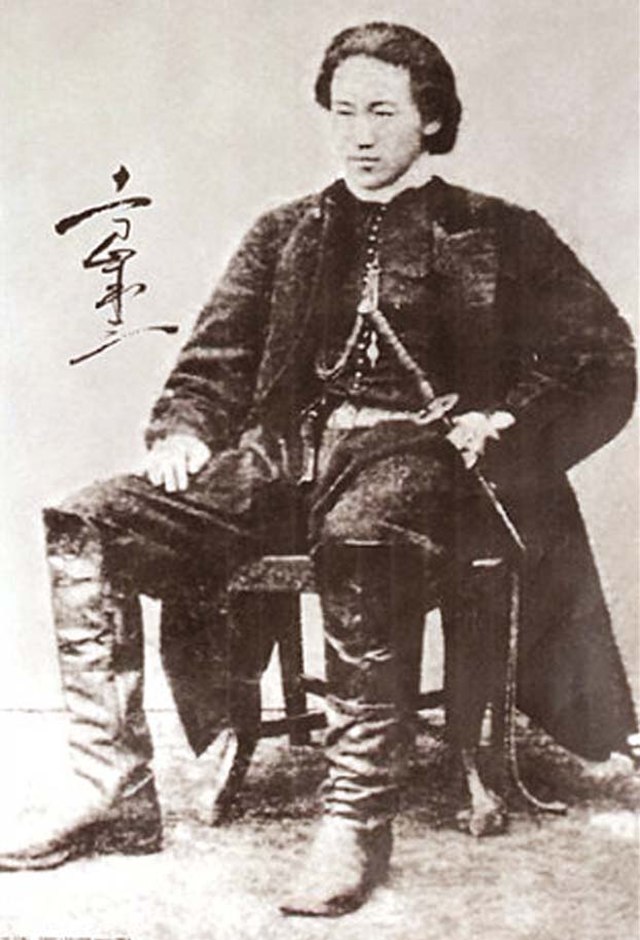
Shinsengumi – Hijikata Toshizo. Photo unattributed – Wikimedia Commons
Hijikata spent his youth selling his family’s Ishida san’yaku (medicine for treating injuries such as bruises and broken bones) while practicing his self-taught keniutsu.
His brother-in-law, Sato Hikogoro, who was married to his older sister Nobu, managed a Tennen Rishin-rvu dojo in Hino; through Satō, Hijikata later met Kondo Isami and was formally enrolled at the Tennen Rishin-ryū’s Shieikan in 1859.
4. Hijikata never fully mastered the Tennen Rishin-Ryu
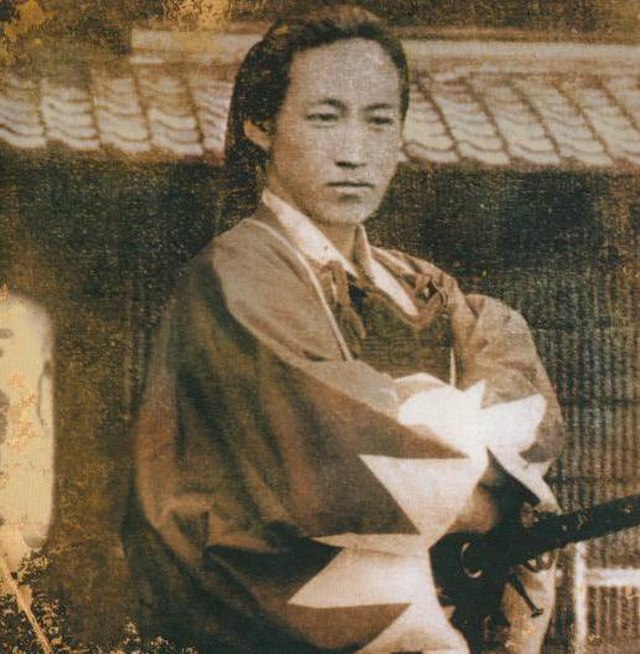
Shinsengumi – Hijikata Toshizo. Photo unattributed – Wikimedia Commons
Although Hijikata himself never fully mastered the Tennen Rishin-Ryu, it is said that he managed to develop the “Shinsengumi-Kenjutsu” fighting style from the Tennen Rishin-ryū.
An arrangement was made by his eldest brother Tamejiro for him to marry Okoto, the daughter of the shamisen shop owners.
5. Hijikata told the Roshigumi that he would marry after he got a promotion
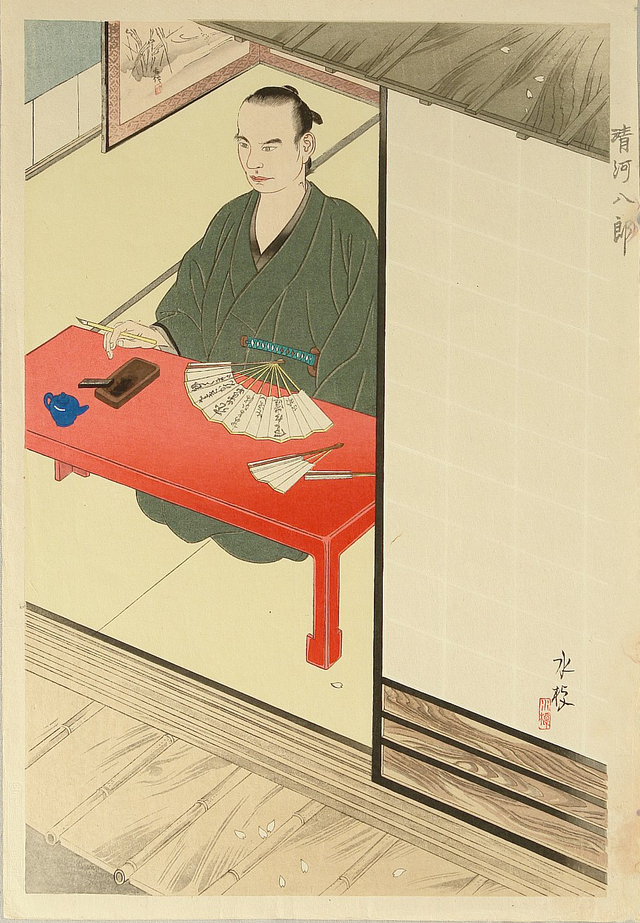
Portrait-Kiyokawa-Hachiro-Roshigumi. A portrait of Kiyokawa Hachiro (1830-1863). The Rōshigumi, the “Kyoto Defenders”, was a group of 234 masterless samurai, founded by Kiyokawa Hachirō in 1862. Loyal to the Bakufu, they were supposed to act as the protectors of the Tokugawa shōgun but were disbanded upon their arrival in Kyoto, Japan in 1863. Photo unattributed – Wikimedia Commons
Since he had already planned to join the Roshigumi with Kondō Isami, Hijikata told them that after he got a promotion, he would carry out his marriage.
In 1863, Hijikata and Kondō Isami joined the Rōshigumi in Edo, they arrived in Mibu Kyoto and remained there as the Mibu Roshigumi while the rest returned to Edo.
6. Hijikata served as one of the deputy leaders of Shinsengumi, Kondō
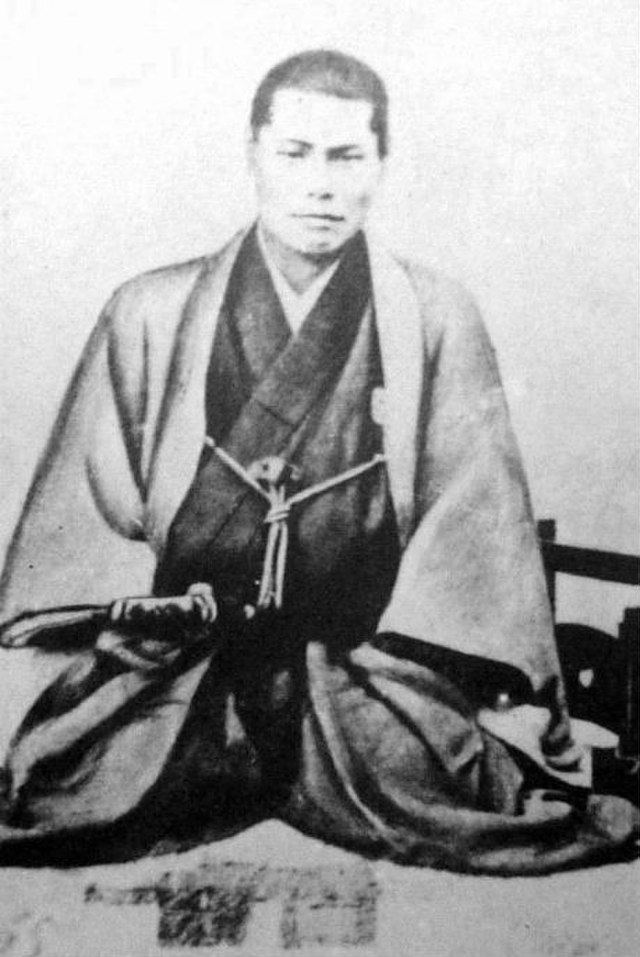
Isami Kondo a Japanese man 近藤勇 (Kondō Isami). Photo published by 東洋文化協會 (The Eastern Culture Association) – Wikimedia Commons
Later, when Mibu Rōshigumi was renamed the Shinsengumi, Kondō and two other men, Serizawa Kamo and Njimi Njshiki, became joint leaders of the group, and Hijikata served as one of the deputy leaders.
Shinsengumi served as a special police force in Kyoto that fought against the Reformists under Matsudaira Katamori, the Daimyo of Aizu.
7. Hijikata found enough proof against Niimi in things he was accused of joining in

Coat of mail of Kondo Isami. Kusari katabira (coat of mail) and hachi gane (forehead protector) of Kondo Isami, Ryozen Museum of History, Kyoto Japan. Uploadalt photographed at Ryozen Museum of History. Kyoto Japan- Wikimedia Commons
However, Serizawa and Niimi began fighting, drinking, and extorting money from merchants in Kyoto, which started to tarnish the reputation of Shinsengumi and earned the group the derogatory nickname of “Wolves of Mibu”.
Hijikata found enough proof against Niimi in these matters and ordered him to commit seppuku on October 19.
8. He was among the selected Shinsengumi members who assassinated Serizawa, his mistress and one of his followers
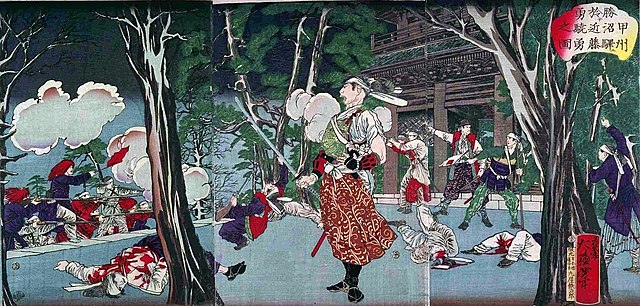
KoshuKatsunuma. Kondō Isami, leader of the pro-shogunate Shinsengumi, facing soldiers from Tosa (distinctive “Red bear” (赤熊 Shaguma)) wigs of the officers) at the Battle of Kōshū-Katsunuma. It was a battle between pro-Imperial and Tokugawa shogunate forces during the Boshin War in Japan. 1880 woodblock print in the Edo-Tokyo Museum. Photo by Tsukioka Yoshitoshi – Wikimedia Commons
Later on October 30 (or October 28) at night, Hijikata and the selected Shinsengumi members went into the house of Yagi Gennojō and assassinated Serizawa, his mistress Oume, and one of his followers Hirayama Goro, with Hirama Jūsuke been the only survivor who fled that night.
Kondō became the sole leader of Shinsengumi, with Yamanami Keisuke as his Vice-Commander.
During the Ikedaya incident in the evening on July 8, 1864, Hijikata led the second group of 23 Shinsengumi members after Kondō’s to help arrest a group of shishi at the Ikedaya Inn.
Sometime after the Zenzaiya incident, Yamanami Keisuke tried to leave Shinsengumi, despite the regulation against deserters.
9. Hijikata took over as Vice-Commander of Shinsengumi in 1865

Hijikata Toshizo Sekihi. Photo by CasinoKat – Wikimedia Commons
As a result, he committed seppuku with Okita Soji as his Kaishakunin on March 20 (lunar calendar February 23), 1865; and Hijikata took over as Vice-Commander.
Due to his position in the Shinsengumi, which would be dangerous for anyone close to him, Hijikata felt that he had no choice but to cancel his marriage engagement with Okoto.
Although he later had many lovers, he never came close to committing to any of them.
10. Hijikata was known to be harsh in enforcing the regulations set up by Shinsengumi

Stone Momument of Hijikata Toshizo in Hakodate. Photo by Saigen Jiro – Wikimedia Commons
The Shinsengumi grew to 140 men, which included several farmers and merchants whose livelihood would be threatened if the Tokugawa shogunate was overthrown. The regulations set up by Shinsengumi within Kyoto were strict and Hijikata was known to be harsh in enforcing them, hence his nickname: “Demon Vice-Commander” (Oni no fukucho).
Even within the Shinsengumi itself, regulations were strictly enforced by Hijikata. As usual, deserters and traitors were forced to commit seppuku.
Hijikata owned, among others, a sword signed “Izumi no Kami Kanesada”, made by the 11th and last generation Aizu Kanesada (1837-1903).
Together with the rest of the Shinsengumi, Hijikata became a hatamoto in 1867 and took the name of Naitō Hayato (but reverted to his original name after Kondō was captured and executed during the Boshin war). He was given the rank of Yoriai (Yoriai-kaku) in early 1868.
Planning a trip to Paris ? Get ready !
These are Amazon’s best-selling travel products that you may need for coming to Paris.
Bookstore
- The best travel book : Rick Steves – Paris 2023 – Learn more here
- Fodor’s Paris 2024 – Learn more here
Travel Gear
- Venture Pal Lightweight Backpack – Learn more here
- Samsonite Winfield 2 28″ Luggage – Learn more here
- Swig Savvy’s Stainless Steel Insulated Water Bottle – Learn more here
Check Amazon’s best-seller list for the most popular travel accessories. We sometimes read this list just to find out what new travel products people are buying.









